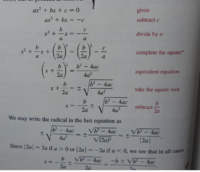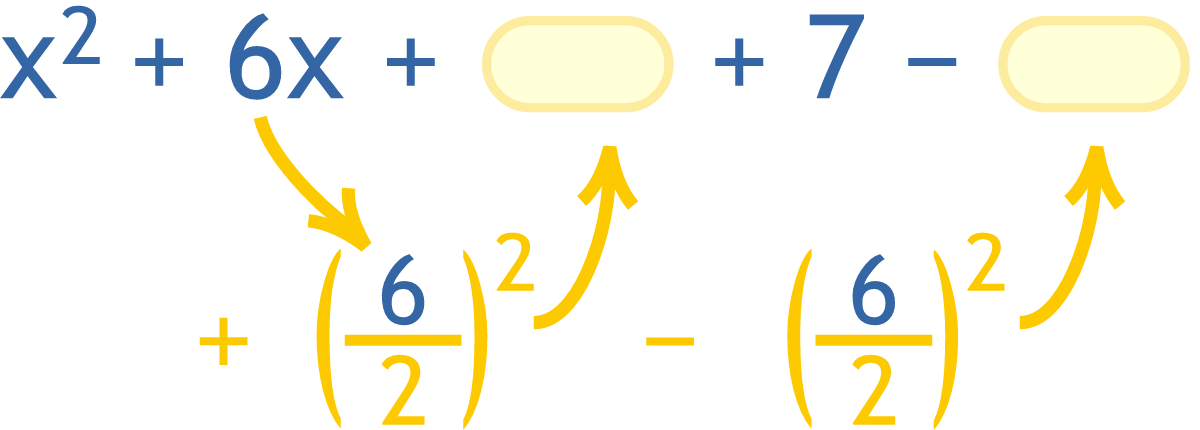allegansveritatem
Full Member
- Joined
- Jan 10, 2018
- Messages
- 962
I was looking a method for deriving the quadratic formula from the form:ax^2+bx+c=0 but got taken up short when I couldn't account for the whereabouts of a term. Here is the book's presentation:

Now, what is puzzling me is this: Where does the b/a times x go after the 4th equals sign? I mean., between the 4th and the fifth line of this proof, the b/a times x seems to fall out of the world. What am I missing. I tried several times to prove derive this formula for myself and came up with some really exotic expressions.

Now, what is puzzling me is this: Where does the b/a times x go after the 4th equals sign? I mean., between the 4th and the fifth line of this proof, the b/a times x seems to fall out of the world. What am I missing. I tried several times to prove derive this formula for myself and came up with some really exotic expressions.

